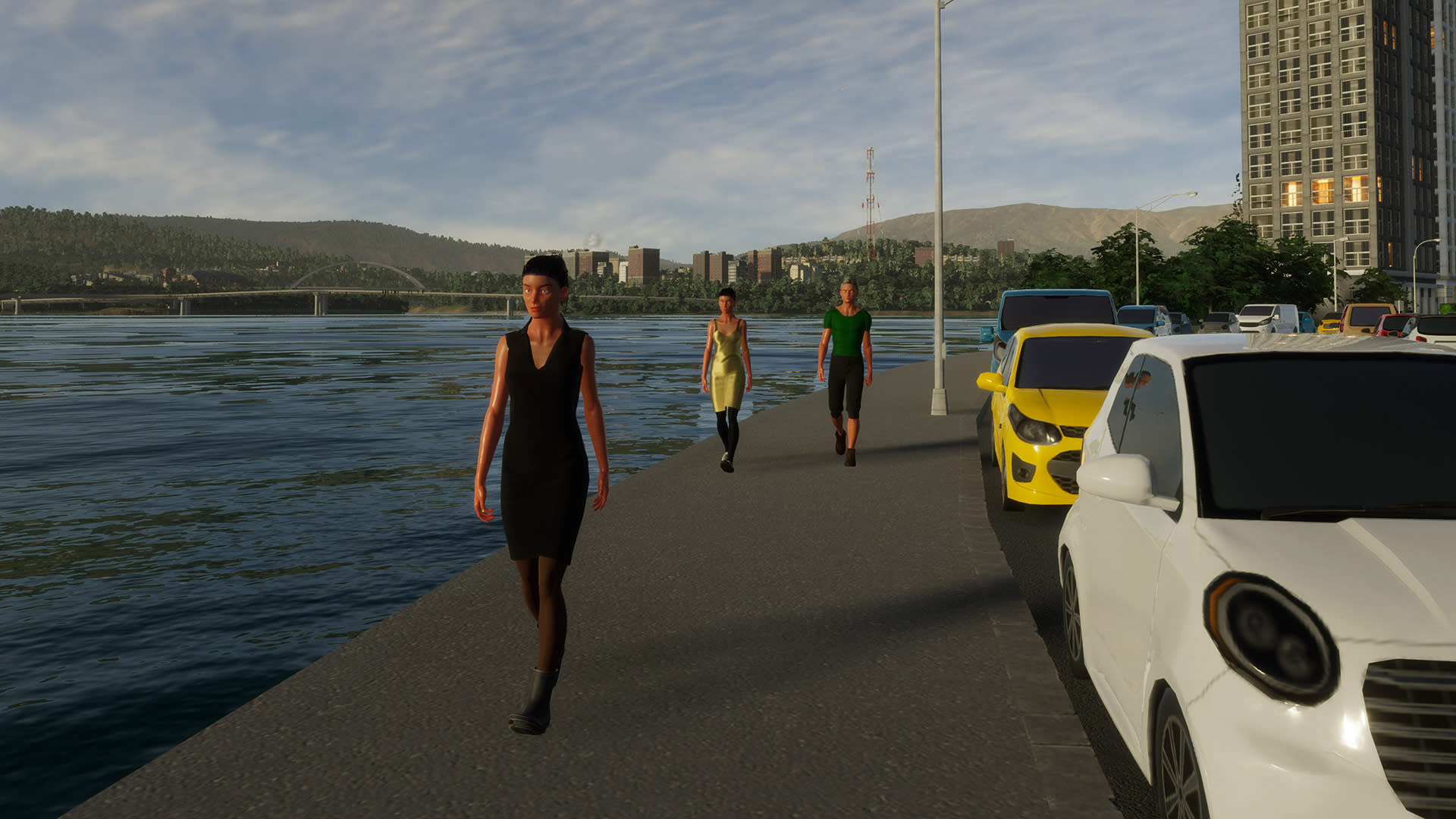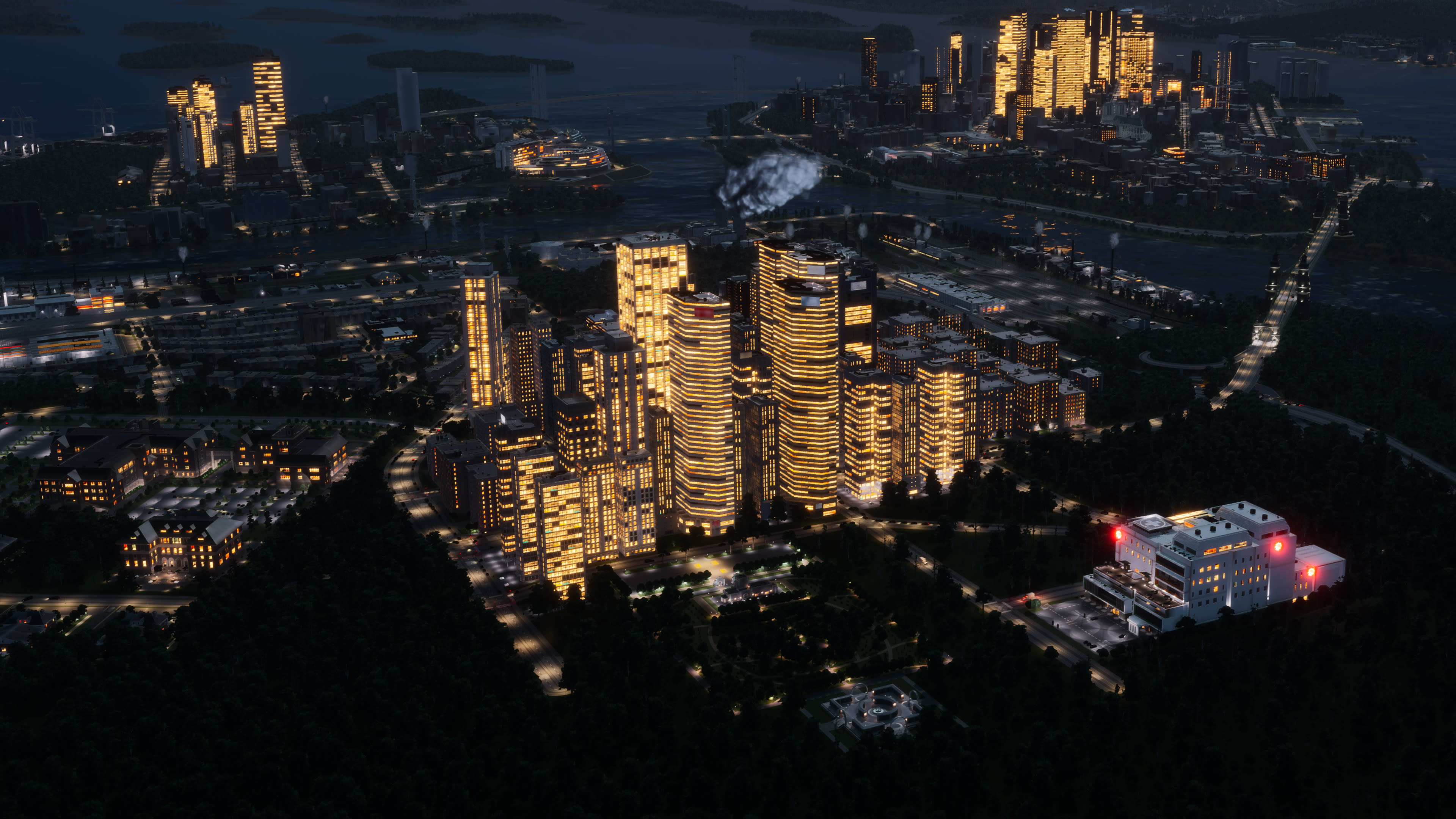Cities: Skylines II Feature Highlight #8: Climate & Seasons
Hello everyone and welcome to today’s development diary for Cities: Skylines II! Last time we introduced Maps and Themes and now we will continue with two new and exciting map features: Climate and Seasons. For a quick overview check out the video. In Cities: Skylines maps had different themes that changed the visual atmosphere and environment to represent different climates, but maps using the same theme would work the same meaning two boreal cities would experience the same climate or length of day. In Cities: Skylines II we have replaced that system with a whole new feature in the form of Climates! It brings changing seasons to the game and makes each map a unique gaming experience with its own Climate that is based on real-world locations, ranging from the Finnish countryside in the North to Brisbane in the South. Climate controls the changing seasons, length of the day, and weather patterns so they match the seasons and latitude of the map.

Enjoy the unique atmosphere of each map and their climates
Climate & Weather
The game features different types of climates with various characteristics unique to each map. Climates are based on latitude and longitude resulting in differences in the length of day and amount of sunlight as well as other elements such as temperature range, amount of cloud coverage, and precipitation. Those parameters mean all maps will introduce different Climates with four distinct seasons. Climates can be ground into three basic Climate types that act as a foundation for each map’s unique characteristics. Maps based on the Temperate Climate have distinct seasonal changes, moderate precipitation, and a wide temperature range, while maps with the Continental Climate type introduce significant annual variations in temperature. Lastly, we have the Polar regions which feature a short and cold summer and a long-lasting cold winter. You may recognize which category a map falls into based on its displayed temperature range, but as Climates are customized for each map, you will experience significant differences between maps that fall into the Continental group.
Fun fact: Many maps’ Climates are based on real-world locations. For example, River Delta is based on Shanghai, and Lakeland on the Finnish city of Savonlinna.
Weather is closely tied to the climate and represents the climate’s seasonal changes. Each map features unique weather which changes with the simulation. You can encounter various intensities of rainy weather, different cloud coverage, temperature changes, etc.

Citizens prefer to stay indoors on cold or rainy days and enjoy outdoor activities more during sunny days The weather has gameplay effects, for example, temperature and the amount of rain or sun affect citizens’ behavior when they are deciding if they want to use a park or indoor leisure activities. Citizens prefer indoor activities when the temperature is low or it is raining. Temperature also realistically affects the city’s energy consumption with hot weather increasing the energy consumption as the city needs air conditioning to keep cool. In cold weather, the city needs heating causing energy consumption to increase again.
Time & Seasons
With both a day and night cycle and seasons at release, Cities: Skylines II handles time differently than its predecessor. One cycle through day and night equals one month and each season lasts about three months, with one year in the game taking twelve in-game days. The length of the day-night cycle is based on the map’s climate and current season with nights being longer during the winter. As the sun sets the building lights and street lights come on, lighting the way for citizens.

Experience rush hours as the day comes to an end and settles into a calm night Seasons affect more than just the amount of sunlight in a day though. Depending on the Climate, temperature changes over the course of the whole year, as does the chance of rain and cloud coverage. During cold months snow falls and covers the ground of maps with Climates that include cold seasons. When there is snow, the Road Maintenance building’s snowplows take care of excess snow on the roads, keeping up the road condition to reduce the risk of accidents. The map’s location plays an important role when it comes to seasons as cities located in the southern hemisphere experience the seasons at opposite times of the year compared to the northern hemisphere.

Keep your citizens warm and your roads clear as snow blankets the city Like in Cities: Skylines the game speed is adjustable with three speed options to choose from, as well as the option to pause the game at any time. When the game is playing at normal speed the in-game day is a bit over an hour in real life. At the highest speed, the in-game day is one-third of the normal speed in real-life.
Natural Disasters
Beyond the normal weather phenomenons, Cities: Skylines II includes natural disasters adding random events and challenging gameplay. Disasters can be switched on and off when starting a new game or loading an existing save. Disasters can affect your city in many ways, and while you can prepare for possible natural disasters with disaster control systems, they can’t be avoided completely. On the mild end of the spectrum, disasters might cause traffic accidents that lead to traffic jams, which can further affect your services’ ability to respond to the disaster. They cause damage to buildings and citizens directly hit by the disaster, which burdens healthcare, deathcare, and rescue services and causes disruptions to the companies or services housed in the affected buildings. Natural disasters are logged into the Event Journal which can be found in the right side panel of the main UI. The journal includes past events in chronological order and information about what happened, when it happened, and what outcome the event had.
Forest Fire
Forest fires can happen in all climates though the risk of a forest fire happening is affected by precipitation level and temperature, for example, dry weather has a higher risk of forest fires breaking out. A forest fire near buildings can spread to them causing building fires and wreaking havoc in the city. It is important to take care of forest fires to prevent harm to the city. You can prepare for forest fires by placing Firewatch Towers on the map. They decrease forest fire probability and firefighters' response time within their range, limiting the fallout if a forest fire should happen. Fire trucks can extinguish a fire when it reaches the road network but placing a Firefighting Helicopter Depot in your city helps to put out the fire in places where fire trucks have no access.

Make sure your firefighting helicopters are ready for the dry season and increased risk of forest fires
Hail Storm
When the weather is cold, but not freezing, there is a possibility of a Hail storm occurring. Hail storms cause physical damage to buildings but do not destroy them. The damaged buildings need to be repaired after the storm and the money and resources for those repairs come from the residents taking away from means that would usually go to building upkeep and leveling. A Hail storm can also cause traffic accidents, which of course interrupts the traffic flow. The citizens don’t need to evacuate but they prefer staying indoors during a Hail storm.
Tornado
The Tornado is the most extreme natural disaster included in Cities: Skylines II. It affects citizens, vehicles, and buildings and can cause serious damage to them as it moves through the city. The buildings can get damaged or even destroyed by the Tornado, citizens can get injured or die, and a lot of traffic accidents tend to happen in the area the Tornado hits. The best way to prepare for extreme natural disasters is by placing Small and Large Emergency Shelters in your city so that they are easily reachable for citizens. The Early Disaster Warning System can spot approaching natural disasters and informs citizens earlier to go to the shelters in time to avoid the disaster. The citizens will run to the shelters and the large emergency shelters feature evacuation buses that are deployed at the same time as the evacuation order. The evacuation buses will plan their path based on population density, prioritizing schools, medical clinics, and hospitals.

Emergency Shelters keep your citizens safe while a tornado sweeps through the city That concludes our development diary and we hope you enjoyed this look at the weather and seasons! With or without disasters enabled, weather affects your city and its inhabitants, and the map you choose to build your city brings different challenges for you to handle. Which of these features are you most excited about? We’d love to hear your thoughts! Next week we dive into the nitty-gritty details of your city’s Economy & Production.








